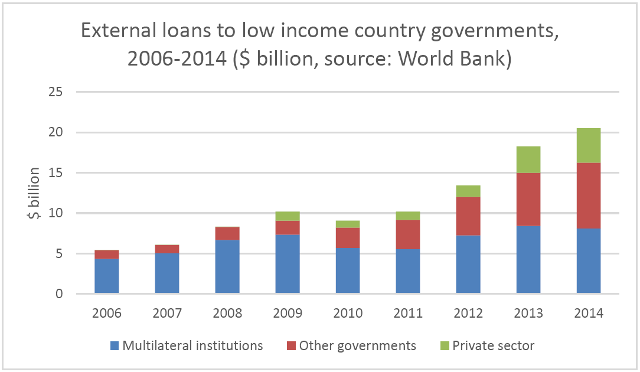Information hidden in budget announcements suggest UK government will be giving £3.8 billion of ‘aid’ money as loans in next four years

Papers from the Office for Budgetary Responsibility (OBR) accompanying today’s budget announcement suggest that the Department for International Development (DfID) is planning to start giving a significant amount of its aid money as loans.
The OBR states that in 2016-17, DfID is planning to give direct net loans (loans minus repayments) of £800 million, rising to £1.2 billion in 2017-18. DfID has not previously given loans directly itself, though has effectively funded loans through various multilateral institutions. £1.2 billion would amount to 9% of UK aid.
Sarah-Jayne Clifton, Director of the Jubilee Debt Campaign, said:
“Since the 2008 financial crisis there has been a boom in lending to impoverished countries. With the recent crash in commodity prices and high value of the US dollar, many of DfID’s priority countries are already heading back into debt crisis. Ghana, Mozambique and Sierra Leone are amongst those now receiving bailout loans form the IMF to pay-off reckless lenders.
“To tuck a major change in UK aid policy away inside forecast tables would be a major failing of transparency and accountability. Justine Greening needs to make an urgent statement as to what the planned loans by DfID are, and how they will contribute to sustainable reductions in poverty.”
Globally loans to low income countries have trebled since the financial crisis began, rising from $5.1 billion in 2006 to $19.9 billion in 2014 according to the World Bank (see graph below). Ghana is the first country back in debt crisis, spending 30% of government revenue on external debt payments in 2016.

The IMF and World Bank say that of 70 impoverished countries which they assess debt ratings for, three are in default, 16 are at high risk of not being able to pay, 35 at moderate risk and 16 at low risk.
